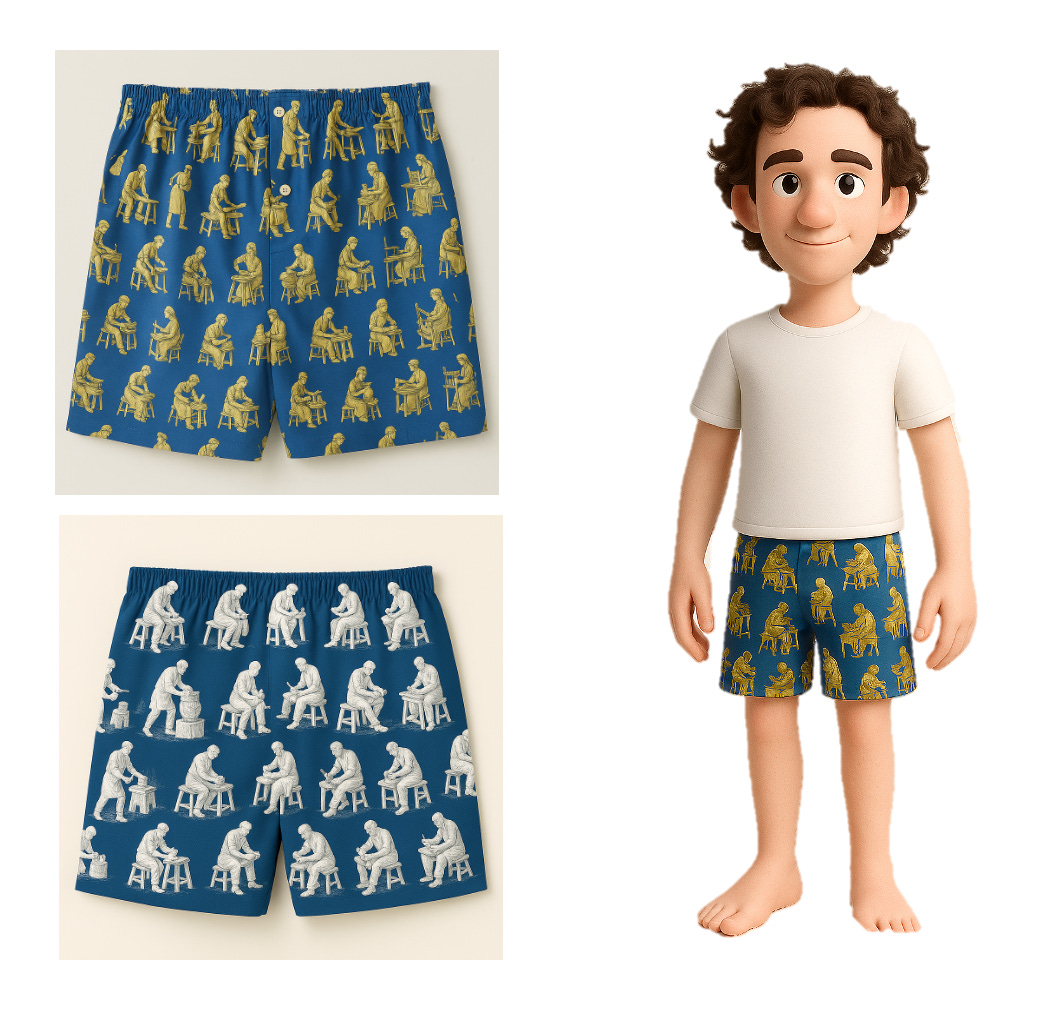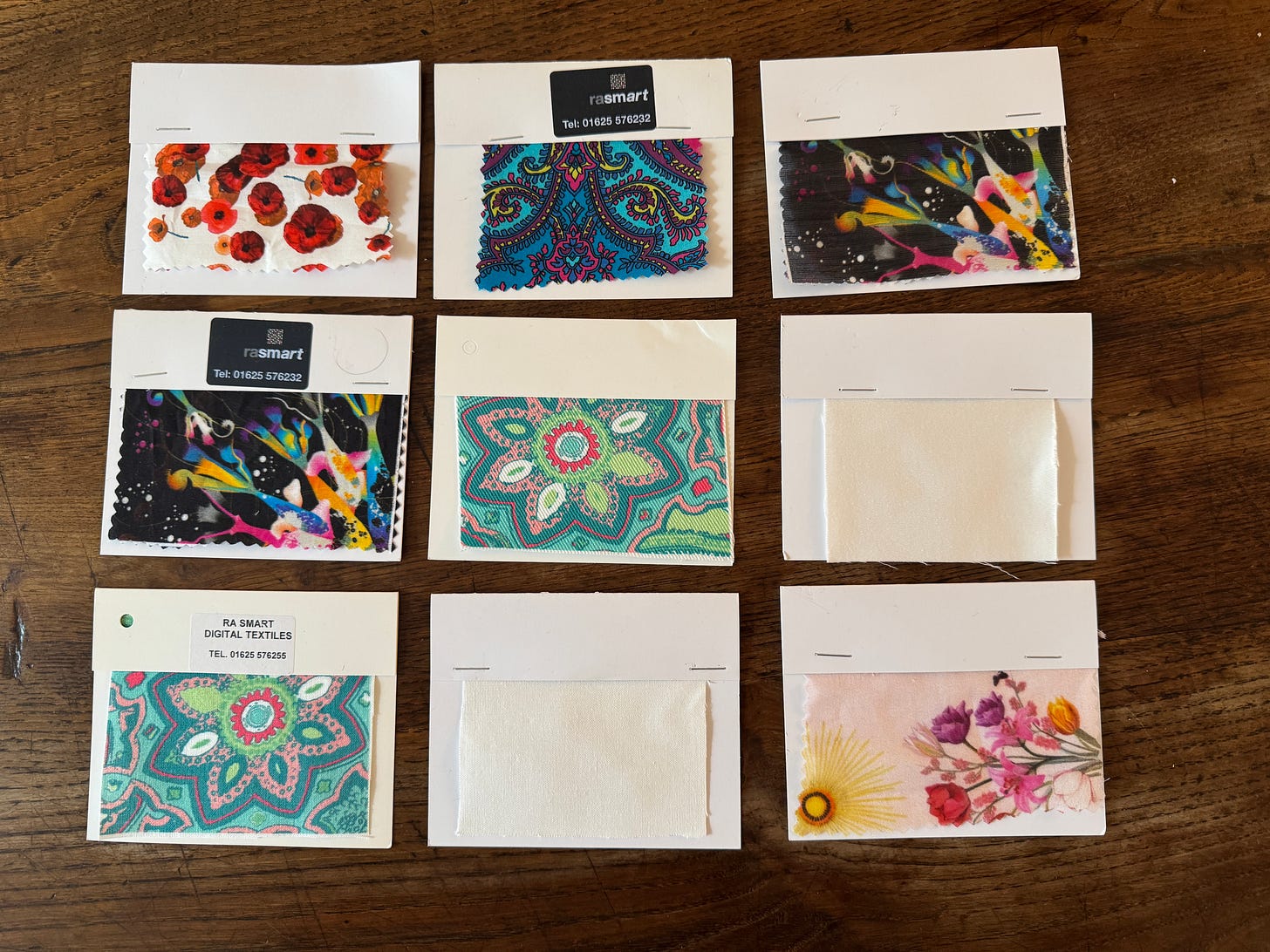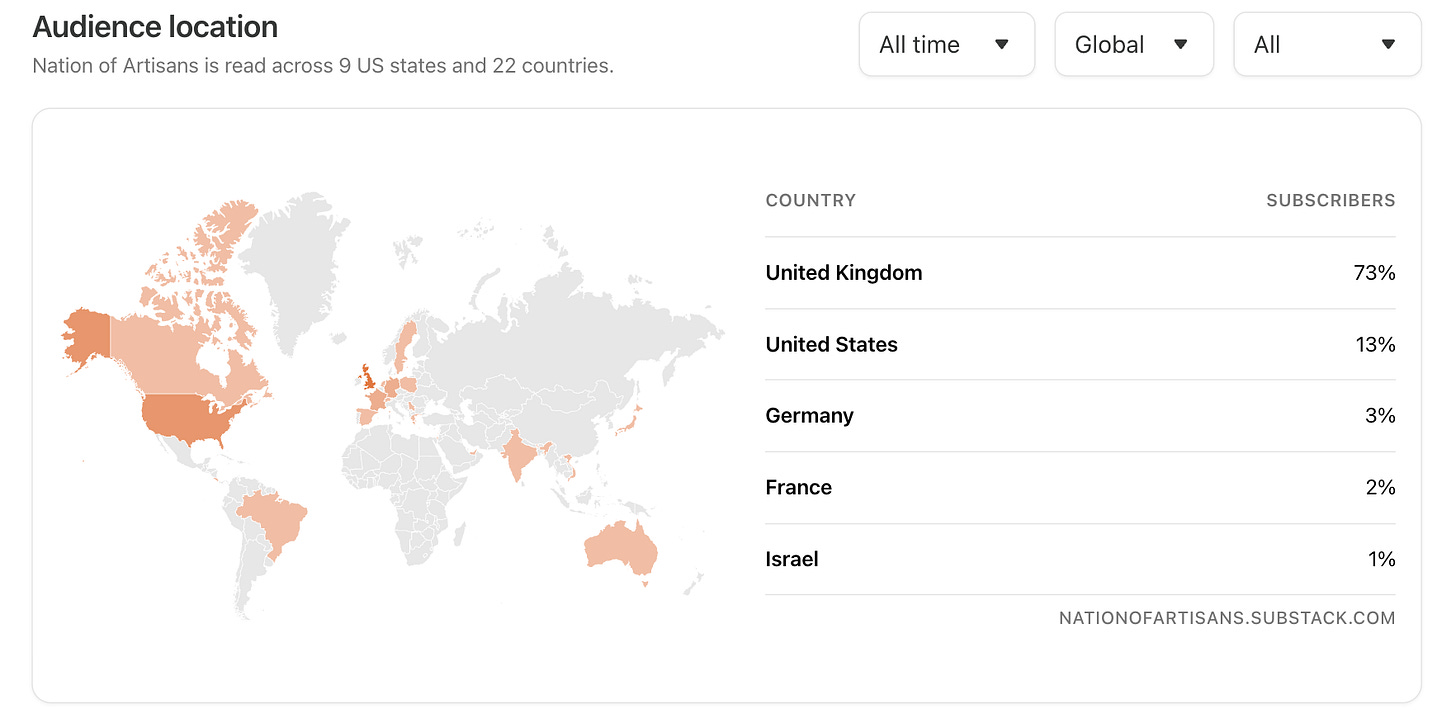#7 How To Build A Boxer
On the Voyage of the AI Pants
My name is Louis Elton. I’m on a quest to craft an entire outfit from underwear-to-outerwear entirely in Britain. Why? To trigger a renaissance in British manufacturing and to heal the nation’s spirit, of course! In this week’s post, I deconstruct the Project AI Boxers — surprisingly, it’s not so simple.
1. Making a Sample
Before I make anything at scale, I must create a sample to ensure it’s a good product. There are 6 steps to this, outlined below:
Step 1: Design
I’ve been using ChatGPT4o to mock up some designs. For the first textile print, I want to create a design of various artisans at work in ivory on a blue background. AI is very good at this. I vibe-prompted several designs and then generated a Pixar version of me wearing one. It’s ugly, imprecise, and the characters are much too large — but directionally, it’s not far off. More to come.
Step 2: Fabrics
I’ve gone deep into the world of British-sourced fabrics. It’s not a pretty sight. Here’s the downlow:
Cotton
While grown abroad, but historically spun here, the industry is basically dead. There was a brief attempt by English Fine Cottons to build a local trademarked Britspun cotton revival in 2016. It sadly collapsed in 2024.
Flax
This mostly Irish industry has faded. I’ve ordered several samples from the few places still growing locally, but I suspect they are not soft enough for my purposes.
Nevertheless, there are pockets of optimism. I stumbled across a fascinating project in Blackburn where Justine Aldersey-Williams and Patrick Grant produced a pair of “Homegrown/Homespun” jeans. Remarkable — but not at the scale needed to make enough boxers.
Hemp
Promising, but more to learn. I’ve ordered lots of samples — if anyone has any leads for where I can source some soft, locally grown, and boxer-suitable hemp, please get in touch.
Other Materials
Materials scientists — I need you. I’m looking into all sorts of things — from Pangaia’s B2B platform to recycled cottons. Nothing seems to meet all the criteria. It should be soft, accessible within the UK, printable (e.g, I can print my funky designs on them), and durable. Help!
Step 3: Printing
Thankfully, this bit is easy. I’ve spoken to several digital printing services. All of it can be done in the UK.
RA Smart sent me some samples:
Step 4: Cutting
I’ve been searching for a pattern cutter. To the unannointed, a pattern cutter is like the architect that mediates between the vision of the designer and the manufacturers. It’s a niche skill. If anyone knows a good one, please introduce me!
Step 5: Assembly
Factories. This step seems less complicated than I imagined. There are still many clothesmaking factories dotted around the UK. I’m in touch with a few. Despite my fears, minimum order quantities (MOQs) are not a problem. Small runs of 100-200 garments are surprisingly simple.
Yet, it’s contingent on having the right fabric and the right patterns — still some way to go.
Step 6: Sampling
I plan to make about 5 samples for me and some lucky readers to try out and give feedback before I do the full run. If you give this post a ❤️ and DM me, I will sign you up for a free sample. First come, first serve (UK only).
The real thing is some way off, but I generated an AI gif of Pixar me wearing some slightly distorted boxers I made with ChatGPT4o x Meshy. Great fun.
2. Other Updates
The second edition of the Japanese language translation of Nation of Artisans is out! Tell all your Japanese friends. Thanks again to Minami for her terrific translation. Or at least I assume it’s terrific. I cannot actually read it.
In other news, the Nation of Artisans Design Prize is still ongoing ahead of the May 1st Deadline.
#4 The Nation of Artisans Design Prize
Before I make clothes, films, or anything else, Nation of Artisans needs a logo. This is where you, my Elders and early audience, come in.
3. Now Try This
This week, I continued to power through Your Life Is Manufactured by Tim Minshall. I’m almost done and will share my thoughts in due course.
I also travelled to Dresden for a real job client meeting and gorged on a schnitzel in the sun next to the Frauenkirche. Bombed during WWII, its reconstruction was finished in 2005. Hands down one of the most beautiful cities in Europe.
Nation of Artisans is now read in 22 countries around the world — from Japan and Brazil to India and the UAE.
I jumped on the AI personalised doll trend.
Until next time.







![[video-to-gif output image] [video-to-gif output image]](https://substackcdn.com/image/fetch/$s_!Tw2K!,w_1456,c_limit,f_auto,q_auto:good,fl_lossy/https%3A%2F%2Fsubstack-post-media.s3.amazonaws.com%2Fpublic%2Fimages%2F2d6bb76a-64cc-4013-bdff-f4a58862cf35_500x924.gif)




180gsm linen would work beautifully - John English is an excellent mill in Ireland and they will provide education as needed - linen can be washed to softness or kept crisp - it's completely your choice. If you buy a prepared for dye (PFD) linen and do a reactive dye with heavy softeners you can make them any colour you like and they'll feel like you broke them in. If you want to embrace original artisans - buy a linen sheet or table cloth from a charity shop - pre-softened and highly sustainable. If you want to embrace the artisans - cut your own print block and wood block print the linen yourself - or go find a print designer / wood block printer - there are plenty of these folks around who are amazing and would give you enough fodder for these posts and explain how its done introduce you to inks and processing/finishing. You needn't use AI to reiterate what already exists as it doesn't seem to fit into your theme of "Nation of Artisans". Imagine the issue is that this is a very limited run of apparel pieces? You really need to buy from jobbers because you can't meet mill minimums. But go meet people in the mills - they're fascinating. Good luck Louis - show us all what your find out.